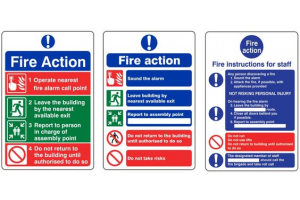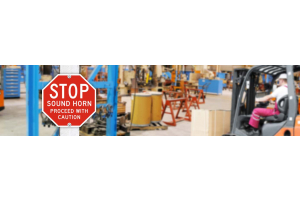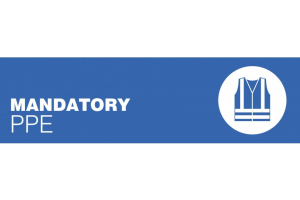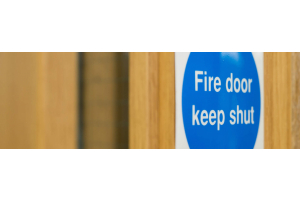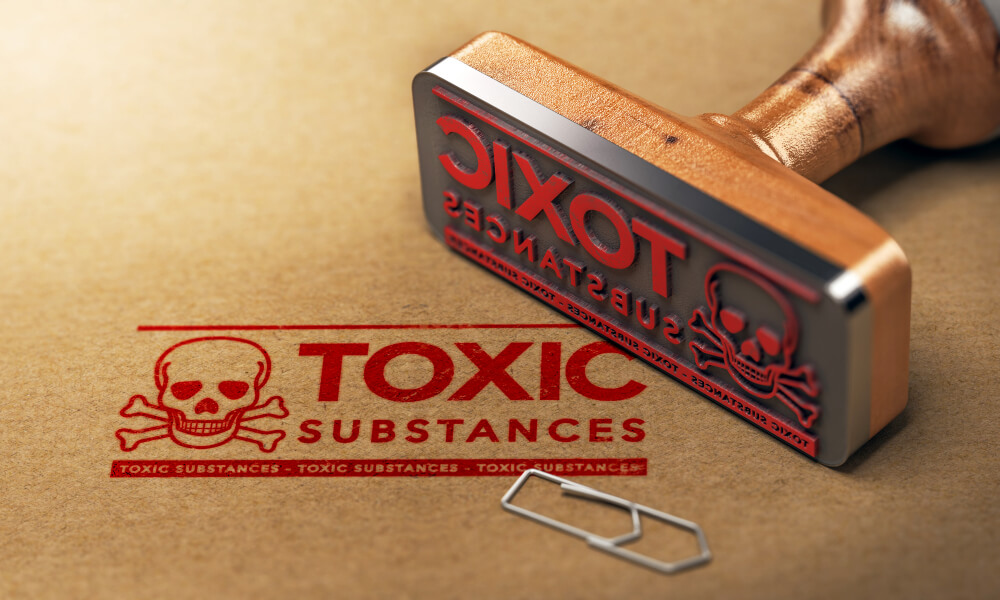
A Guide To COSHH
Working with substances hazardous to health A brief guide to COSHH. Myth ‘Of course it’s safe – we’ve always done it this way.’ Reality Some diseases take years to develop. If exposure is high because the task has always been done that way, maybe it’s time for a change.Introduction, This Article describes how to control hazardous substances at work, so they do not cause ill health. It will help you understand what you need to do to comply with the Control of Substances Hazardous to Health (COSHH) Regulations 2002 (as amended) which apply to the way you work with these substances. This Article provides measures that you, as an employer, may need to do to protect your employees from hazardous substances at work. It will also be useful to employees and their safety representatives. Why do I need to read this article?
Every year, thousands of workers are made ill by hazardous substances, contracting lung disease such as asthma, cancer and skin disease such as dermatitis. These diseases cost many millions of pounds each year to: industry, to replace the trained worker; society, in disability allowances and medicines; and individuals, who may lose their jobs. You, as the employer, are responsible for taking effective measures to control exposure and protect health. These measures can also improve production or cut waste. Looking after your business, Your aim in running your business is to make a profit. You know what you do, and how you are doing it. You know what ‘processes’ and ‘tasks’ are involved. You know the short cuts. Ensuring your workers remain healthy may also lead to healthy profits.
Which substances are harmful? Dusty or fume-laden air can cause lung diseases, eg in welders, quarry workers or woodworkers. Metalworking fluids can grow bacteria and fungi which cause dermatitis and asthma. Flowers, bulbs, fruit and vegetables can cause dermatitis. Wet working, eg catering and cleaning, can cause dermatitis. Prolonged contact with wet cement in construction can lead to chemical burns and/or dermatitis. Benzene in crude oil can cause leukaemia. Many other products or substances used at work can be harmful, such as paint, ink, glue, lubricant, detergent and beauty products.
III health caused by these substances used at work is preventable. Many substances can harm health but, used properly, they almost never do. Find out the dangers in your business – ask your supplier, your trade association. Substances can also have other dangerous properties. They may be flammable, for example solvent-based products may give off flammable vapour. Clouds of dust from everyday materials, such as wood dust or flour, can explode if ignited. This article does not deal with flammability or explosion hazards. Look at each substance, Which substances are involved? In what way are they harmful? You can find out by: checking information that came with the product, eg a safety data sheet; asking the supplier, sales representative and your trade association; looking in the trade press for health and safety information; checking on the Internet, website pages for your trade. Think about the task, If the substance is harmful, how might workers be exposed? By: breathing in gases, fumes, mist or dust? contact with the skin? swallowing? contact with the eyes? skin puncture? Bear these in mind when you look at the tasks.
Exposure by breathing in, Once breathed in, some substances can attack the nose, throat or lungs while others get into the body through the lungs and harm other parts of the body, eg the liver. Exposure by skin contact, Some substances damage skin, while others pass through it and damage other parts of the body. Skin gets contaminated: by direct contact with the substance, eg if you touch it or dip your hands in it; by splashing; by substances landing on the skin, eg airborne dust; by contact with contaminated surfaces – this includes contact with contamination inside protective gloves. Exposure by swallowing People transfer chemicals from their hands to their mouths by eating, smoking etc without washing first. Exposure to the eyes, Some vapours, gases and dusts are irritating to eyes. Caustic fluid splashes can damage eyesight permanently. Working with substances hazardous to health, Exposure by skin puncture, Risks from skin puncture such as butchery or needlestick injuries are rare, but can involve infections or very harmful substances, eg drugs. Products you use may be ‘dangerous for supply’. If so, they will have a label that has one or more hazard symbols. These products include common substances in everyday use such as paint, bleach, solvent or fillers. When a product is ‘dangerous for supply’, by law, the supplier must provide you with a safety data sheet. Note: medicines, pesticides and cosmetic products have different legislation and don’t have a safety data sheet. Ask the supplier how the product can be used safely. Safety data sheets can be hard to understand, with little information on measures for control.
Dangerous to the environment, find out about health risks and emergency situations, Since 2009, new international symbols have been gradually replacing the European symbols. Some of them are similar to the European symbols, but there is no single word describing the hazard. Read the hazard statement on the packaging and the safety data sheet from the supplier. New International symbols, Hazard checklist, Does any product you use have a danger label? Does your process produce gas, fume, dust, mist or vapour? Is the substance harmful to breathe in? Can the substance harm your skin? Is it likely that harm could arise because of the way you use or produce it? What are you going to do about it? Use something else? Use it in another, safer way? Control it to stop harm being caused?
Assessing risk
Risk assessment is not just a paper exercise. It’s about taking sensible steps to prevent ill health. You need to know how workers are exposed, and to how much, before you can decide if you need to do anything to reduce their exposure. The COSHH Regulations require employers to assess the risk to their employees, and to prevent or adequately control those risks. Sometimes, it’s easy to judge the amount of exposure to substances and decide what you can do about it. When the task involves very small amounts of material, even if these are harmful, when there is little chance of it escaping, the risk is low. But the risk in a different task – such as cleaning up and disposal – will be higher because the harmful substance may be breathed in or get onto the skin. When the task involves larger amounts of material, with obvious leaks, exposure is higher and so is the risk. Whether the substance is harmful or not, your need to control it is obvious. Decide what measures you need to take, and when. If you have five or more employees, you must record your assessment but, even if you have fewer than five, it makes sense to write down what steps you have taken to identify the risks. And the really important part is making a list of the actions you are taking to control the risks to health. However, there may be no ‘good practice’ advice available for your process. Where this is small-scale with obvious control measures, you can do the assessment yourself. In other cases, or where you are not sure, ask your supplier, trade association or other reliable information sources. You may need professional advice such as from an occupational hygienist.
What are exposure control measures? Control measures are always a mixture of equipment and ways of working to reduce exposure. The right combination is crucial. No measures, however practical, can work unless they are used properly. So any ‘standard operating procedure’ should combine the right equipment with the right way of working. This means instructing, training and supervising the workers doing the tasks. You need control measures that work and continue to work – all day, every day. Choosing control measures In order of priority:
- 1 Eliminate the use of a harmful product or substance and use a safer one.
- 2 Use a safer form of the product, eg paste rather than powder.
- 3 Change the process to emit less of the substance.
- 4 Enclose the process so that the product does not escape.
- 5 Extract emissions of the substance near the source.
- 6 Have as few workers in harm’s way as possible.
- 7 Provide personal protective equipment (PPE) such as gloves, coveralls and a respirator. PPE must fit the wearer.
- If your control measures include 5, 6 and 7, make sure they all work together.
Control equipment, Control equipment comes in many forms. It includes ventilation to extract dust, mist and fume; glove boxes and fume cupboards; spray booths and refuges (clean rooms in dirty work areas). It also includes using water to reduce dust, and systems for disinfecting cooling water. For control equipment, your supplier should provide a ‘user manual’. If you don’t have one, ask for it. And if this is impossible, you may need professional help to write one. The user manual should set out schedules for checks, maintenance and parts replacement. For example it should include: a description of the system; the daily checks the worker or supervisor needs to carry out, eg the ventilation is turned on, the airflow indicator gives the right reading; the weekly or monthly checks the supervisor or owner needs to carry out, eg of equipment wear and tear, and that short cuts are not creating dangers; details of any thorough examination and test; signs of wear and control failure; a list of replaceable parts; a description of how operators should use the system so it works effectively. Remedy defects in good time. It is pointless making checks if you take no action when something is wrong. And you are not managing health and safety properly if the ‘thorough examination and test’ produces a long list of ‘actions needed’. Keep simple records of your checks and actions, eg in a logbook, and keep these records for at least five years. Staying in control: Checking and maintaining. Once you’ve got control, you need to keep it. As the employer, you must make sure that the control measures (equipment and the way of working) keep working properly. You should name someone to be in charge of checking and maintaining control measures. It could be you, or someone you appoint, as long as they know what they need to do, and are able to do it. That is, they are ‘competent’ to: check that the process isn’t emitting uncontrolled contaminants; check that the control equipment continues to work as it was designed; check that workers follow the right way of working. Two of the most common control measures where maintenance is critical are local exhaust ventilation (LEV) and personal protective equipment (PPE). Local exhaust ventilation (LEV) If you use local exhaust ventilation to control exposure, it needs regular checking and thorough examination and testing at least once every 14 months or at more frequent intervals if you are using it with one of the processes listed in Schedule 4 of COSHH.
Many people, eg engineers or insurance companies can carry out thorough examination and testing of LEV. Whoever does the work must be competent. Personal protective equipment (PPE) Personal protective equipment is often used as part of control measures. This also needs checking and maintenance because, if it fails, it no longer provides protection and exposes the wearer to danger. The users need to know exactly what they are doing, and so do the supervisors. PPE suppliers and trade associations can tell you about training in how to use it properly. Checklist for good control practice
- Do you design and run your processes to keep the spread of contaminants as low as possible?
- Do you think about all routes of exposure – breathing in, on skin or swallowing?
- Do you choose control measures according to the amount of substance, how it gets into the body and how much harm it will cause?
- Do you make sure that measures are effective, easy to use, and work properly?
- Do you also need to issue personal protective equipment (PPE)?
- Do you check regularly that measures continue to work, and keep simple records?
- Do you tell workers about the dangers and how to use control measures properly?
- Do you avoid increasing the overall health and safety risks when making changes?
Skills and experience, Competence, Ensure that whoever designs, installs, maintains and tests your control measures is competent – they have the necessary skills, knowledge and experience. You can assess the competence of equipment and service providers with questions such as: Have you done this sort of work before? What are your qualifications? Do you belong to a professional organisation? Can I speak to previous clients? Ideally, you want someone who knows your industry, has a successful track record, and gives good value for money. Worker involvement Involve your workers in developing control measures to make sure they are suitable for the way they carry out the work. Encourage them to suggest improvements, and to report anything they think might be going wrong. Training, instruction and information, Explain to your workers, and anyone else who needs to know, what the dangers are. It is poor practice just to hand them a page of written information. Show workers how to use control measures properly, and how to check that they are working. Carry out practice drills for cleaning up spills safely – do this before any spillages happen. If workers need to use respirators, they also need face fitting and training. If they need to use protective gloves, they need to know how to put them on and take them off without contaminating their skin.
Keeping workers healthy, Monitoring exposure, Monitoring normally means air sampling but it may also involve taking biological samples, eg breath or urine. Monitoring normally makes reference to ‘Workplace Exposure Limits’ It is wasteful to try monitoring before you have put any control measures in place, Health checks If your trade press, HSE, or other information, shows there is a problem with health in your trade, such as asthma or dermatitis, your employees may need special health checks. The most common checks are for respiratory disease such as asthma and skin disease.
Bulk storage of acids
The storage of acids can create serious risks, not only to people on site, but also to the emergency services, the general public off site, and to the environment. This publication gives guidance on the design, construction, operation and maintenance of installations used for storing hydrochloric acid and nitric acid in fixed tanks. It applies to new installations and to existing installations where reasonably practicable. It is aimed at managers and supervisors, but may also be of interest to designers and installers. Much of this guidance is common to both nitric and hydrochloric acid, but where the advice differs, this is specifically stated. The properties of hydrochloric acid and nitric acid have many similarities but also many differences (see ‘properties of hydrochloric acid’ and ‘properties of nitric acid’ below). Although much of the advice is common to both acids, some is specific to the individual acid. Advice that applies to hydrochloric acid only will be highlighted in green and advice that applies to nitric acid only will be highlighted in orange. Properties of hydrochloric acid and chemical formula, HCl, and sometimes known as muriatic acid, widely used as a chemical reagent in the production of many common materials. It is also used for metal pickling and in water treatment processes supplied commercially at concentrations mainly within the range 28% to 36% evolves hydrogen chloride vapour with a sharp irritant odour. The amount of vapour is primarily dependent on the acid concentration, but other factors such as temperature and turbulence can have an effect causes severe injury by inhalation of the vapours or fumes, by splashing on the skin or in the eyes, or if taken internally highly corrosive and attacks most common metals, including iron, steel and lead, producing flammable hydrogen gas reaction with oxidisers such as permanganates, chlorates, chlorites and hypochlorites may produce chlorine gas reactions are accompanied by the generation of toxic and corrosive fumes, the rate of reaction depending largely on the concentration.
Properties of nitric acid chemical formula, HNO3 widely used for the production of fertilisers, polymers and dyestuffs and for metal pickling, cleaning and plating supplied in a range of concentrations. Commercially, the most common concentrations supplied are between 60% and 70%, known as ‘weak’ or ‘aqueous’ nitric acid and above 92% known as ‘concentrated’ nitric acid evolves toxic and corrosive fumes. The amount of vapour is primarily dependent on the acid strength (concentrated nitric acid is described as a fuming liquid) but other factors such as temperature and turbulence can have an effect causes severe injury by inhalation of the vapours or fumes, by splashing on the skin or in the eyes, or if taken internally highly corrosive and attacks most common metals, producing flammable hydrogen gas a strong oxidising agent and a serious fire hazard on contact with combustible substances such as straw, coke, charcoal, paper, sawdust, and sacking reacts with alkalis, metal bases and organic materials to form nitrates or nitro compounds reacts violently with most metal powders, carbides and chlorides reactions are accompanied by the generation of toxic and corrosive fumes, the rate of reaction depending largely on the concentration.
Risk assessment, The storage of acids can create serious risks, not only to people on-site, but also to the emergency services, to the general public off-site and to the environment. The greatest risk of significant harm is a large spill or leak from tanks or pipework or associated plant. The main causes of such incidents include: failure to detect corrosion and replace corroded components; damage caused by the impact of vehicles or other objects; overfilling; mixing with incompatible substances. Even small spills and leaks can produce serious injuries if people come into contact with the liquid or inhale the fumes. Minor incidents can develop into major incidents if prompt emergency action is not taken. Under the Management of Health and Safety at Work Regulations 1992,1 every employer has a duty to carry out an assessment of the risks to the health and safety of employees and of anyone who may be affected by the work activity. This is so that the necessary preventive and protective measures can be identified and implemented. HSE recommends a five step approach to risk assessment:.
- Step 1: Look for the hazards.
- Step 2: Decide who might be harmed, and how seriously.
- Step 3: Evaluate the risks arising from the hazards and decide whether existing precautions are adequate or more should be done.
- Step 4: Record your findings (this is a statutory requirement if you have five or more employees).
- Step 5: Review your assessment from time to time and revise it if necessary.
Your risk assessment should include risks arising from the tank and risks to the tanks from external sources. The aims of the assessment are to: minimise the likelihood of a spillage; reduce the consequences of such an incident, particularly with regard to people and the environment. When assessing a storage installation you should consider these factors: storage capacity; design standards for the installation; location of the tank in relation to site boundaries, roadways, buildings, process areas, drains, waterways; activities on adjacent premises; quantities and locations of other dangerous substances; loading and unloading arrangements; possibility of feeding wrong substances into the tank; training and supervision of site operatives; inspection and maintenance; number of employees and public who might be affected by a leak and their ability to evacuate quickly. You should carry out a risk assessment before installing new facilities, modifying existing facilities or demolishing obsolete facilities. It is a good idea to seek the advice of organisations such as the fire authority, the Environment Agency or Scottish Environment Protection Agency, the Health and Safety Executive and insurance companies. The Control of Substances Hazardous to Health Regulations require employers to assess the risks from exposure to hazardous substances and the precautions needed. Guidance on the risks to health is outside the scope of this book but guidance on the Regulations is available. Siting of the tank When selecting the location of acid storage tanks, consider the distance of the proposed installation from: the site boundary; roadways and site thoroughfares; occupied buildings; storage or processing of other dangerous substances particularly incompatible substances such as strong alkalis and oxidising agents; water courses and boreholes.
The aim is to prevent accidental or deliberate damage by activities on or off site and to protect people and the environment. Acid storage tanks are usually installed at ground level because construction and tank maintenance are less costly, gauging and pumping are easier, and leaks are easier to detect. As corrosion cannot be completely eliminated, good access for inspection and maintenance is essential. Tanks can be horizontal or vertical. Horizontal tanks are generally considered easier to repair and maintain but vertical tanks use less space and the ground support is less expensive. Also, stock taking and level control is more accurate in vertical tanks. The tank foundation (and the supports for horizontal tanks) should normally be of concrete with the required load bearing strength and thickness. The size of the tank needs careful consideration. Keep stock levels as low as reasonably practicable, taking into account process demands and the frequency and size of deliveries. Bunding, the probability of a major leak from a well-designed and maintained storage system is low, particularly if overfill protection has been fitted However, the consequences of an acid spill are potentially very serious and measures to contain spillages or leaks from acid storage tanks should be provided. Bunding is the usual method to contain spills or leaks from vessels. The purpose of the bund is to: prevent the liquid entering drainage or other water systems; prevent the spread of the liquid which could present a hazard to other plant or personnel both on and off site; prevent contamination of land; allow the controlled recovery or treatment of the spilled material. The bund walls and floor should be constructed of materials resistant to the acid being stored. Acid resistant tiles are available and bricks and cement can be faced with acid resistant coatings. Coatings will require maintenance and regular renewal. The choice of materials will depend on the acid itself, its concentration and temperature. If in doubt, contact the supplier. The bund should have sufficient capacity to contain the largest predictable spillage. A bund capacity of 110% of the capacity of the largest storage vessel within the bund will normally be sufficient. Consideration should be given to the provision of individual bunding for each acid tank to prevent damage to other tanks if a leak occurs. Chemicals which react with the acid should not share the same bund. The bund walls should have sufficient strength to contain an acid spill (taking into account the density of the acid stored). For example, a bund wall constructed of 225 mm bricks or blocks with a height in excess of 600 mm is likely to collapse if it has to contain major spillages. If a height greater than 600 mm is required then you may need to use additional strengthening, such as using a greater thickness of brick or block, reinforced concrete or buttresses. A fixed means of access to the bund may be necessary. Rainwater should not be allowed to accumulate in the bund. Methods for the removal of bund contents (eg acid spills or rainwater), such as a sump and a manually controlled sump pump, should be provided. Bund liquids should be analysed as necessary before removal or disposal to prevent contamination of drainage systems. If a drain valve is used it should be kept locked in the closed position and only used by authorised personnel. The drain valve and any associated piping or hand siphon pumps should be made of materials compatible with the acid stored.
